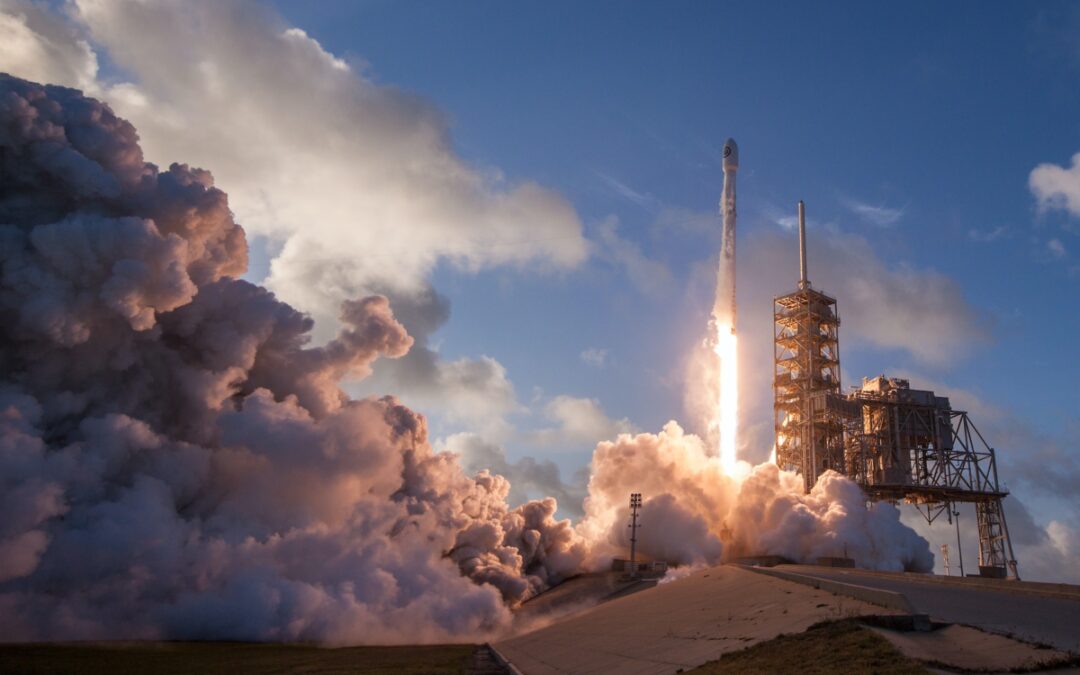Roads make things possible. New types of roads make new types of things possible. It’s a mechanism for commerce, it provides a consistent way to get things from place to place and provided a mechanism for transmitting information. Communication and transportation have historically gone hand in hand. The Inca’s road system was as much for communication as it was for transportation. Same with Roman roads. They also defined where larger population centers would be. In the early days of the United States, most cities were coastal and connected inland through a series of paths and simple roads. The railroad ushered in a new type of road. This was the first of many new highways.
The First New Highway
The first railroad in the U.S. started with 14 miles of track in 1830. In 1869, the town of Ogden Utah was born thanks to the Union Pacific and Central Pacific railroads. It changed where people could work and live. This was one of many cities where the railroad and the telegraph went hand in hand. Flagstaff Arizona, Cheyenne Wyoming, Scranton Pennsylvania, and Durango Colorado are all major cities today because of the railroad and the telegraph.
For the first time, goods and services could cross the country fast and efficiently. Markets were no longer regional, they were national. As it matured, rail transportation allowed people to live further from their workplaces which allowed urban expansion. And then there was tourism. People could see amazing sites that they couldn’t easily get to otherwise.
We Need Standards
Railroads mean standardization in lots of areas. Before the Civil War, track sizes were not standardized primarily in the South. This contributed significantly to the outcome of the war.
We still have the standardized gauges from the late 1800s. It’s nice in some respects, but it is a limitation to the size of things we can transport and the speed at which we can move things. As an example, the boosters for the space shuttle could only be a certain size because of the rail equipment needed to transport them. Years ago I worked on the Acela high-speed train that runs from Boston to Washington. It’s pretty modern on the inside. But the tracks between New Haven and New York are as windy as the trails they were originally laid over. As a result, the track limits how fast the train can go. Railroads allowed growth and communication in essentially two directions. If you wanted to go somewhere different, you need to have a reason to connect something on the other end. That was until the car and the telephone changed that.
Telephones and Automobiles
The early 20th century saw the car and telephone follow in the path established before them. Then things started to go grow in different directions. The car is largely responsible for our current concepts of dating, shopping, and entertainment. Care of the elderly and the disabled changed dramatically as a result of the car. Leisure activities expanded in new directions, and where people lived changed again as well.
Beginning at the end of World War Two, returning veterans were looking to set up homes. The first suburbs appeared on Long Island, in what was known as Levittown. The concept kind of took off from there, but it didn’t take hold until a few years later when the interstate highway bill was signed into law by then-President Eisenhower. This bill built 41,000 miles of the roads that we currently use today largely modeled after the German autobahn, except with cloverleaf exits and entrances thanks to then-Senator Al Gore senior.
These highways made possible the growth of suburbia as we know it today. They also no longer were directly tied to communications. The car allowed for transportation in infinite directions, and the telephone allowed communication on the same scale. As long as you could get to work, you could live just about anywhere. Except for mail service, the link between communication and transportation was effectively severed. communication was happening over the phone, short wave, and eventually satellites. As the internet and the world wide web matured, communications were happening in infinite directions, and not just between people.
5G Highway
Fast forward Almost 70 years, and we have a new highway taking hold in the form of 5g. I skipped over aviation and the changes in water transportation because they generally built on existing patterns and made them faster. If you want the full history of transportation, click here. The pandemic pushed some concepts along further, but the bottom line is that for the first time, transportation, communication, and where we work/live are not tied together.
And this is creating a new move away from the suburbs to wherever anybody wants to live. While 98.8% of urban dwellers can access high-speed Internet, only 82.7% of rural residents typically had access. With 5G, rural areas that were once underserved by traditional broadband providers can potentially gain access to high-speed internet. This could enable more people to work from home, participate in remote learning, and access telehealth services. 5G provides connectivity that 4G didn’t.
It’s not just people that are being connected. 5G networks can support the use of IoT sensors, drones, and other advanced technologies in agriculture, buildings, and in infrastructure like bridges and tunnels. This can help farmers optimize their operations by providing real-time data on crop health, soil moisture, weather conditions, and more. Toll booths are no longer needed. There are applications for smart electrical grids, smart water systems, and smart transportation systems. This can improve the efficiency and sustainability of these systems and reduce maintenance costs.
Improved connectivity and access to advanced technologies can attract businesses and entrepreneurs to both rural areas and urban areas alike, creating new job opportunities and driving economic growth.
Remote Work and Collaboration
With 5G, remote workers and teams can collaborate more effectively, thanks to faster data speeds and lower latency. This can enable rural businesses to compete more effectively with their urban counterparts. Overall, the widespread adoption of 5G technology has the potential to transform both urban and rural life and work in numerous ways, bringing new opportunities and benefits to these often underserved communities.
It’s still in the early stages, but just as the highways of the past have changed how and where we work and live, 5G is changing it again. For now, we are calling it “Remote Work”. But before long it will just be back to “Work”. At least for a little while, and then we will have to rethink things again when a new highway comes again. Remote work in the future may mean the Malapert Mountain region on the rim of the Malapert crater. Or if Elon Musk has his way, the Arcadia Planitia plains or the Deuteronilus Mensae valleys. The commute is only 148.89 million miles.



